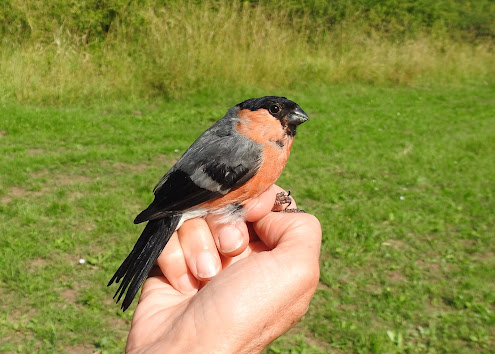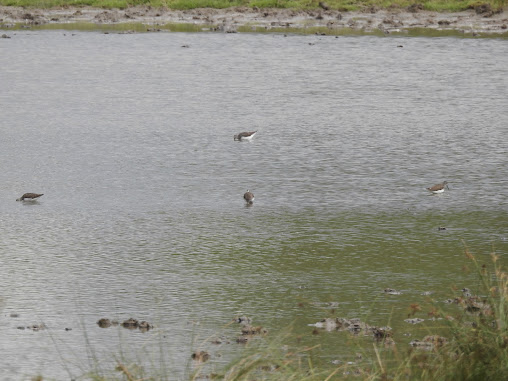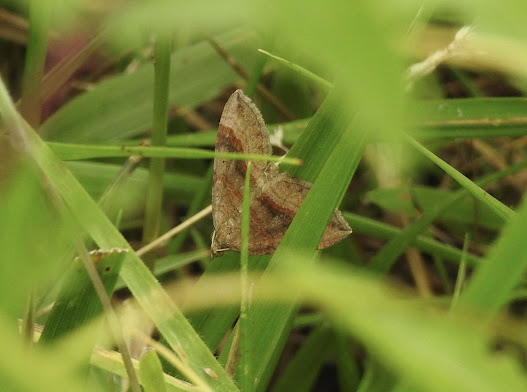A summer heatwave can be a little too much. I went birding at Morton Bagot yesterday, just missing the coolness of early morning, and found that the nearest flash has an even wider margin of mud, and roughly the same number of Green Sandpipers and Lapwings as we saw on Sunday. The wait for something unusual goes on.
At the church I noticed a small group of Swallows on telephone wires, and was left to reflect that the four adults and three juveniles probably represents one successful pair and one failure.
The flip side of all this hot weather is that it should be good for insects. The butterfly totals have been down this year, maybe because of the cool spring, but a warm night meant there should be lots of moths.
I put the trap out in the garden and caught 370 moths of 51 species. That sounds pretty good doesn't it, but the majority were micros; 131 Ypsolophas (Ermines) and 154 Water Veneers forming the bulk.
My only garden tick was a micro, albeit a reasonably large one. A single Eudonia pallida (known as Marsh Grey or Pallid Grey depending on which book you read) was one I had been hoping to see for years. They are described as fairly common, and I suspect that closeness to a reed-bed is the deciding factor.
 |
| Pallid Grey looking suitably pale in an egg box |
The rest of the catch contained no great surprises, although Gold Triangle (another micro) was only my third.
Actually, that's not entirely true. The one big surprise was the lack of any Large Yellow Underwings (or any of the Yellow Underwing species). I'm sure I would have been catching loads of them in previous summers.
Maybe things are just as bad for moths as butterflies (they're all the same thing really anyway).























.jpeg)